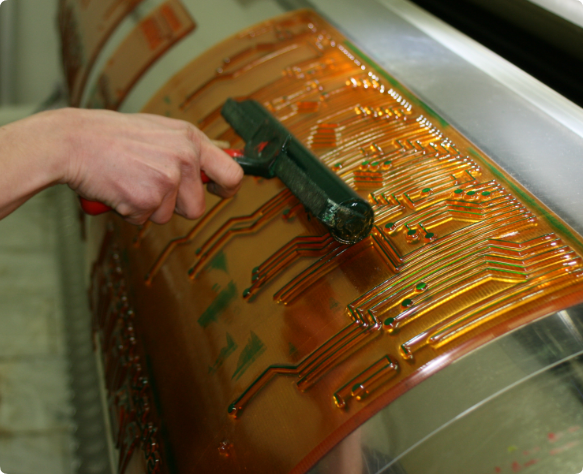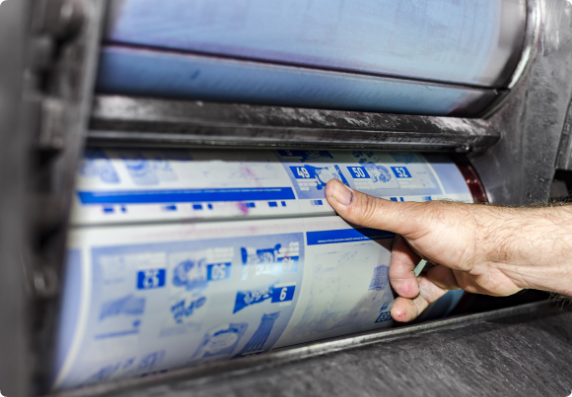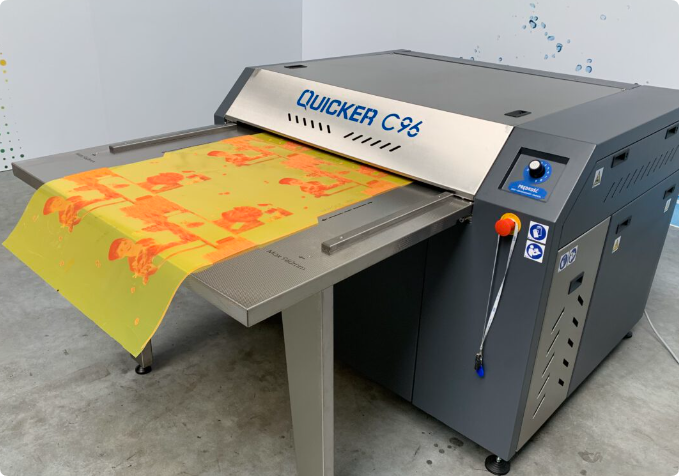In the world of ceramics, especially in the realm of personalized or custom-printed products, one critical component of the manufacturing process is the printing plate. As a key player in global B2B markets, EKA Ceramic specializes in offering ODM and OEM services for custom products, including personalized mugs, plates, and other ceramic items. A clear understanding of printing plate materials is essential for businesses aiming to source high-quality, durable, and aesthetically pleasing products.
This article dives deep into the various materials used to make printing plates, providing valuable insights for procurement officers and decision-makers. By understanding the pros and cons of each material, you can make an informed choice that aligns with your production needs and cost-effectiveness.
Introduction to Printing Plates
Printing plates play an essential role in the ceramic printing process. They are used to transfer images, logos, patterns, or designs onto the ceramic surface, typically in large-scale production. The material used to make these plates significantly affects the quality of the final printed product, its durability, and the cost of production.
Printing plate materials vary in composition and are selected based on the specific printing techniques used, such as lithography, gravure, flexography, or screen printing. Each of these methods benefits from different materials, making it vital for B2B purchasers to understand which material is most suitable for their project.
Types of Printing Plate Materials
1.Polymer Plates
Polymer plates, often used in flexography and digital printing, are composed of plastic-like materials and are known for their flexibility and cost-efficiency. These plates are ideal for quick turnaround projects and are favored for short to medium print runs, making them highly suitable for small-batch production.

Advantages:
- Lightweight and easy to handle.
- Cost-effective for short runs.
- Offers fine detail reproduction.
- Environmentally friendly due to water-based cleaning processes.
Disadvantages:
- Limited durability in long runs.
- Vulnerable to damage from wear and tear.
Best for: Short-run production orders, custom designs with intricate details, and projects with a quick turnaround.
2.Metal Plates
Metal plates, especially those made from aluminum, zinc, or steel, are typically used for lithography or gravure printing. They are renowned for their durability and are ideal for large-scale production where consistency is key.

Advantages:
- Highly durable, suitable for long-run production.
- Consistent quality in large orders.
- Can handle high-pressure printing environments.
- Ideal for precise and sharp image reproduction.
Disadvantages:
- More expensive than polymer plates.
- Heavier and more challenging to handle.
Best for: High-volume orders where durability and quality consistency are crucial.
3.Rubber Plates
Rubber plates are used primarily in flexographic printing and are known for their flexibility and ease of use. They can stretch slightly to accommodate different surface contours, which is why they are often used for printing on curved surfaces such as mugs and bottles.
@ekaceramic2014 🍵Oem order! ☕️Ceramic mug logo design printing !#ceramicmug #mugdesign #ceramiccup #customizedgifts #ceramicfactory
♬ original sound – ekaceramic
Advantages:
- High flexibility, ideal for curved surfaces.
- Can be used in both high- and low-volume print runs.
- Capable of handling multiple types of ink (water-based, oil-based, etc.).
Disadvantages:
- Less precise compared to metal or polymer plates.
- May wear down over time in high-volume printing.
Best for: Products with irregular surfaces, such as mugs and plates with curved designs.
4.Photopolymer Plates
Photopolymer plates are a specific type of polymer plate that is sensitive to light and can be chemically treated to create high-quality, detailed printing surfaces. These plates are primarily used in flexographic printing and are well-suited for intricate designs.

Advantages:
- Extremely fine details possible.
- Lightweight and easy to handle.
- Fast production and cost-effective for medium runs.
Disadvantages:
- Not as durable as metal plates for long runs.
- Higher cost compared to standard polymer plates.
Best for: Medium print runs requiring high detail, such as intricate logo designs and fine patterns.
5.Silicone Plates
Silicone printing plates are less common but are used for specialized applications, particularly for heat-sensitive printing. This material is favored when the production process involves heat transfer or pad printing.
@ekaceramic2014 📧Watch how our everyday ceramics get their beautiful designs using screen printing technology! 🍽️From precise printing to high-quality finishes, every step is carefully crafted. Whether it’s custom logos or unique patterns, we make sure your designs come to life! ☎️We accept small ordersand offer OEM & ODM services for wholesalers, allowing you to customize ceramics exactly the way you want. Ready to make your brand stand out? Contact us for flexible orders today! #Screenprinting #CeramicFactory #OEMODM #CustomCeramics #SmallBatchProduction #WholesalerDeals #FactoryDirect
♬ Dancin’ – ADRIAN!
Advantages:
- Heat-resistant and ideal for pad printing.
- Excellent for printing on uneven or textured surfaces.
- Durable in extreme printing environments.
Disadvantages:
- Expensive to produce and maintain.
- Limited to specific use cases.
Best for: Niche applications where heat transfer is required, or printing on irregularly shaped or textured ceramics.
Comparison of Printing Plate Materials
To help B2B buyers make informed decisions, here’s a comparative table showcasing the main materials used for printing plates, along with their key attributes:
| Material | Best For | Durability | Flexibility | Cost | Printing Method |
|---|---|---|---|---|---|
| Polymer | Short runs, intricate designs | Medium | High | Low | Flexography |
| Metal | High-volume, precision printing | High | Low | High | Lithography, Gravure |
| Rubber | Curved surfaces, varied inks | Medium | High | Medium | Flexography |
| Photopolymer | Fine details, medium runs | Medium | High | Medium | Flexography |
| Silicone | Heat-sensitive, textured surfaces | High | Medium | High | Pad printing |
Selecting the Right Printing Plate for Your Business
Choosing the right printing plate material depends on several factors:
- Order Volume: For high-volume orders, metal plates are often the best option due to their durability. For smaller or medium-sized orders, polymer or photopolymer plates may offer a more cost-effective solution.
- Product Surface: If you are printing on curved or textured surfaces, rubber or silicone plates provide the flexibility needed to handle these challenges.
- Design Complexity: For intricate logos or patterns, photopolymer or polymer plates may offer the level of detail required.
- Budget Considerations: While metal plates offer the best durability, they come at a higher cost. For small-batch orders, polymer plates can provide good quality at a lower price point.
Conclusion: EKA Ceramic’s Printing Plate Expertise
At EKA Ceramic, we are committed to providing high-quality ceramic products with custom printing options tailored to your business’s needs. With years of experience supplying large-scale supermarkets and small-batch cross-border e-commerce clients, we understand the importance of choosing the right printing technology. Whether you’re looking to print a custom logo on a limited run of mugs or require consistent branding for large-volume plate orders, our team can guide you through selecting the ideal printing plate material.
By partnering with EKA Ceramic, you ensure that your products not only look great but are produced using the most suitable and cost-effective printing methods. From flexographic polymer plates for short runs to durable metal plates for large-scale projects, we offer a comprehensive range of solutions to meet your business’s unique needs.
Contact Us Today
If you’re looking to explore custom printing for your next ceramics order, contact EKA Ceramic today. Our experts are ready to help you choose the best materials and printing techniques to ensure your product stands out in the marketplace.

